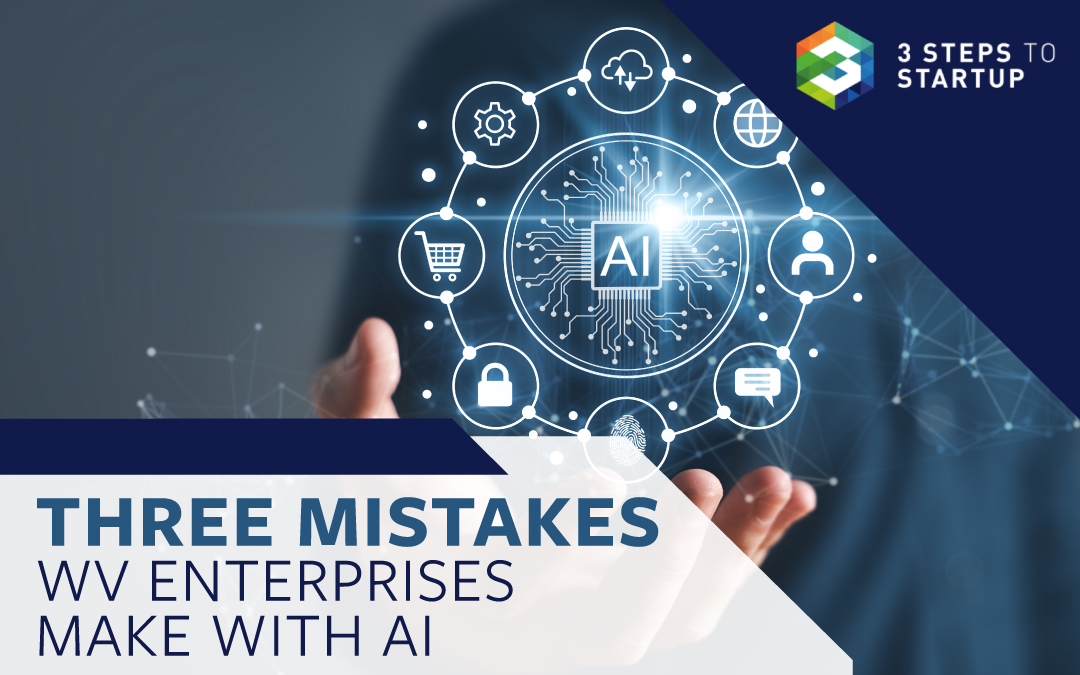
When it comes to incorporating AI into their operations, many West Virginian businesses may find themselves stumbling into common pitfalls that affect their success. As technology continues to advance, it’s crucial for enterprises in the Mountain State to stay ahead of the curve and leverage AI effectively. In this blog post, we’ll explore three key mistakes that West Virginian enterprises often make with AI and how they can avoid them to drive better results for their businesses.
-
Not Setting Clear Goals for AI Implementation
Diving headfirst into the world of AI can feel like navigating the winding roads of the West Virginian mountains without a map — adventurous, sure, but potentially full of unnecessary detours. Just saying you want to “use AI” is like saying you want to “do business” — it’s incredibly vague and, frankly, a recipe for wasted resources.
So, what’s the secret? Goal-setting. But not just any goals — we’re talking about objectives that are as clear. Nailing down what you want your AI endeavors to achieve. Are you looking to streamline your inventory system? Or, perhaps, you’re aiming to personalize your customer service to make each interaction feel more individualized?
Whatever you want to do with AI, be specific. It’s not enough to want to “improve things” with AI. You’ve got to dig deeper. Identify the metrics that matter most to your business. Is it reducing customer response times? Increasing the accuracy of your demand forecasts? The more specific you can be, the better. It’s like setting a waypoint on your GPS — it guides every decision and turn you make from thereon.
Define what success looks like from the get-go, and let that vision guide your steps so AI isn’t just a buzzword in your business strategy, but a real driver of growth and innovation.
Here are a few ways managers can help their team use AI to set realistic goals:
- Use AI tools to analyze historical data, performance metrics, and trends
- AI algorithms can help optimize resource allocation by identifying areas where your team can perform better or where additional support is needed
- Task automation
- AI presentations can help teams align on plans, goals, and deliverables by acting as a platform for better collaboration and communication
- AI-driven learning platforms can help your team acquire new skills and knowledge
-
Underestimating the Importance of Data Quality
So, here’s the deal: diving into AI without paying attention to the quality of your data is like trying to navigate the West Virginian backwoods with a blurry, outdated map. You might make some progress, but you’ll probably end up going around in circles. High-quality data is the lifeblood of AI. It’s what fuels the algorithms, enabling them to churn out insights and predictions that are reliable.
But let’s break it down a little more.. imagine you’ve got this AI system all geared up to help you personalize your marketing efforts. You’re excited because you think, “This is it! We’re going to connect with our customers on a whole new level.” Only, there’s a hitch. The data feeding your AI is messy – full of inaccuracies, inconsistencies, and maybe even biased info. Suddenly, your AI isn’t quite the sharpshooter you thought it was.
Poor data quality can skew your AI’s understanding of what’s really going on, leading to decisions that might miss the mark. In a world where businesses are increasingly data-driven, those mistakes can cost you more than embarrassment. We’re talking real impact on your bottom line.
Ensure your data comes from a variety of sources to help mitigate biases and give your AI a more well-rounded view of the world. And for optimal AI performance, you need balanced data.
-
Skimping on Talent and Expertise
What many businesses in WV might not realize is, is that investing in AI talent doesn’t necessarily mean you need to break the bank hiring hotshot developers. There’s a treasure trove of potential in nurturing the skills within your current team. With a little bit of training and development, you could find inside talent to help bring and implement new practices you adopt with AI.
When it comes to using AI tools, encourage a culture of experimentation and continuous improvement. There should be a lot of trial and error that helps you understand its best application for your business.
AI is not just a fancy tool in your arsenal; it’s a team player that needs the right support to truly help your business. So, don’t cut corners on the people power. Investing in talent and expertise is investing in the future of your business. With the right team in place, there’s no limit to what you can achieve with the help of AI.
Ready to begin integrating AI into your business? Check out our free resources to help keep you up-to-date on best practices in all aspects of launching and growing your business!
